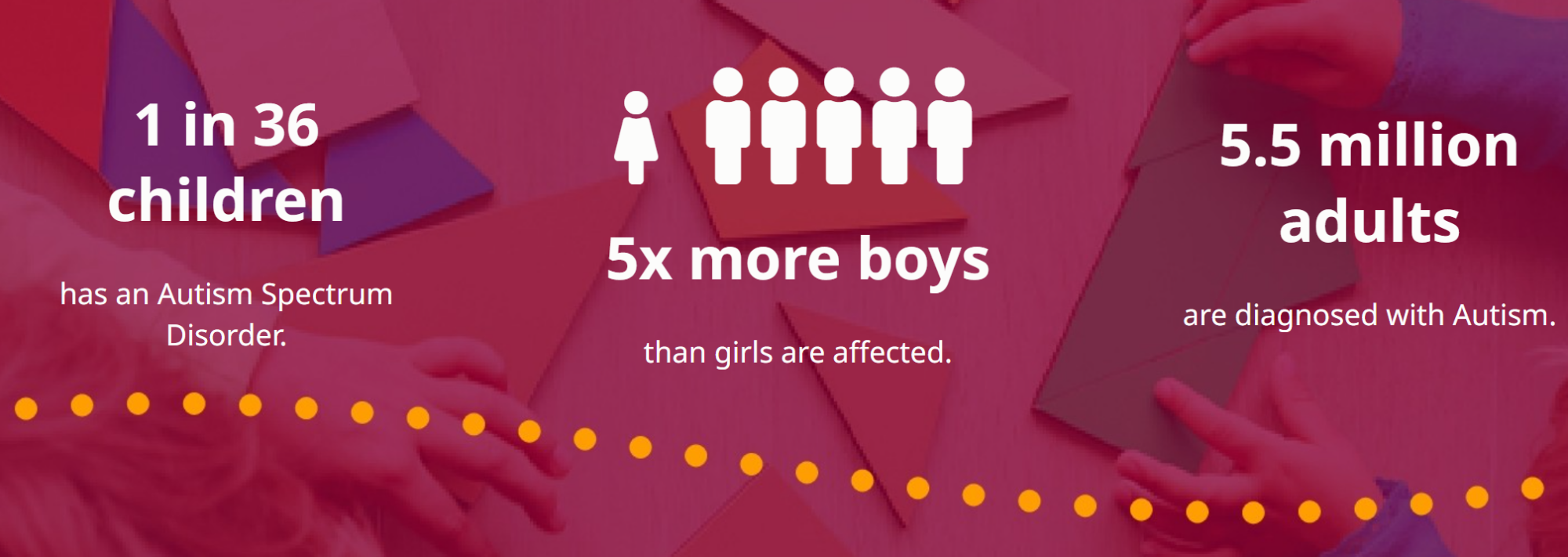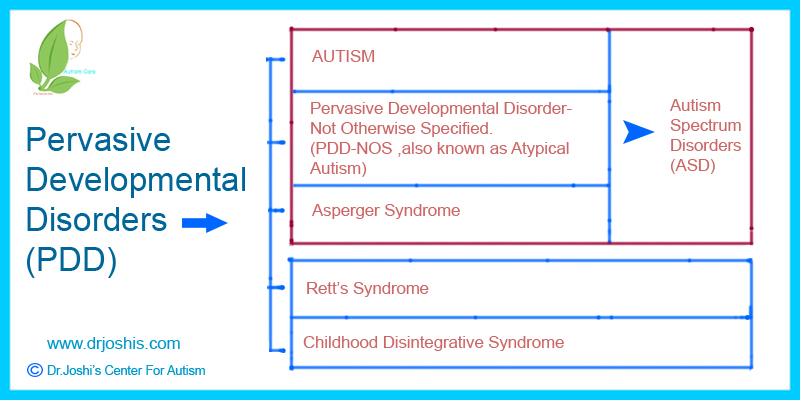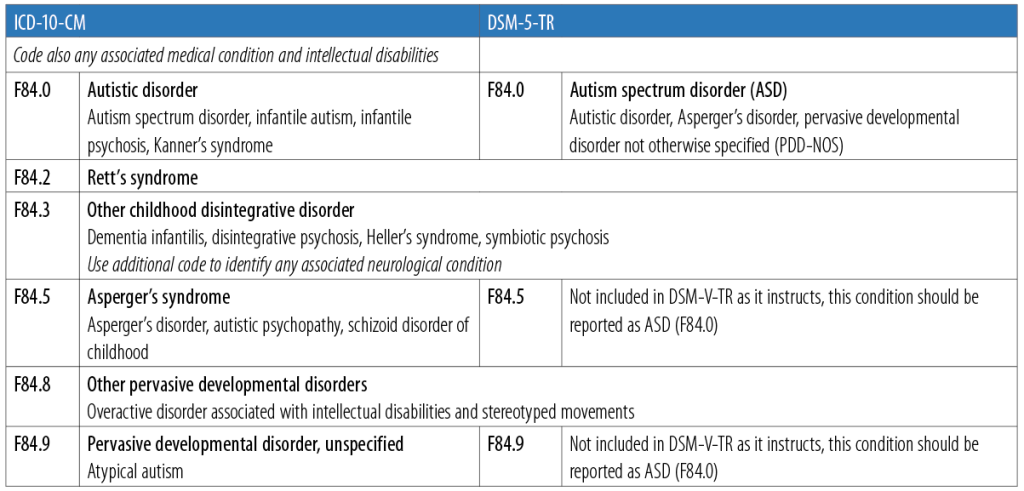Imagine stepping into a world where the usual rules don’t apply. This is what living with Autism Spectrum Disorder Not Otherwise Specified (ASD-NOS) can feel like.
You may have heard of autism, but ASD-NOS is a unique part of the spectrum, often misunderstood and overlooked. If you or someone you care about is facing the challenges of ASD-NOS, you might feel like you’re navigating a maze without a map.
Your journey might be filled with questions and uncertainty. But what if understanding ASD-NOS could open the door to clarity and empowerment? You’ll discover what makes ASD-NOS distinct, how it impacts lives, and how you can find support and strategies that truly make a difference. Dive in to unlock the insights that could transform your perspective on ASD-NOS.

Credit: ascv.org
Autism Spectrum Disorder Basics
Autism Spectrum Disorder (ASD) is a complex developmental condition. It affects communication and behavior. Understanding ASD requires knowing its basics. ASD is not a single condition. It varies widely among individuals. Each person with ASD is unique. Recognizing this diversity is crucial.
Defining Autism
Autism is a neurodevelopmental disorder. It can affect social interaction. It may impact communication skills. Autism can cause repetitive behaviors. These traits vary from mild to severe. Some individuals need little help. Others require significant support. Early diagnosis can be beneficial. It can improve outcomes and quality of life.
Spectrum Concept
The term “spectrum” is significant. It represents the wide range of symptoms. No two people with autism are alike. Some may excel in certain areas. Others may face challenges. This diversity requires tailored approaches. Understanding the spectrum helps create support. Personalized plans benefit individuals and families.
Asd Not Otherwise Specified
Autism Spectrum Disorder Not Otherwise Specified (ASD-NOS) is a unique category. It was used in older diagnostic manuals. People with ASD-NOS showed autism traits but did not fit other specific categories. This term helped many receive support and care.
Historical Background
The term ASD-NOS emerged in the 1980s. It addressed cases that didn’t fit classic autism. Clinicians needed a label for varied symptoms. These individuals often showed social and communication challenges. Yet, they did not meet all criteria for other autism types. This category was helpful in broadening understanding. It showed the diversity within the autism spectrum.
Diagnostic Challenges
Diagnosing ASD-NOS was often complex. Symptoms varied widely among individuals. Some had mild social issues. Others had more pronounced communication challenges. This variability made diagnosis difficult. Clinicians had to rely on a range of behavioral observations. No specific test existed for ASD-NOS. This made consistent diagnosis challenging across different regions. Changes in diagnostic manuals led to new classifications. The term ASD-NOS is less common now.
Clinical Features
Autism Spectrum Disorder Not Otherwise Specified includes diverse behaviors and traits. Individuals may show unique social challenges and communication patterns. Sensory sensitivities and interests can vary widely among those affected.
Autism Spectrum Disorder Not Otherwise Specified (ASD-NOS) presents diverse clinical features. This can make diagnosis challenging. ASD-NOS does not fit the criteria for classic autism. Yet, individuals show significant symptoms. Understanding these clinical features helps in managing the condition better. Let’s explore the core aspects that define ASD-NOS.
Behavioral Characteristics
Behavioral traits in ASD-NOS vary widely. Some individuals may show repetitive actions. These can include hand flapping or rocking. Others might insist on routines. Changes can cause distress or anxiety. Sensory sensitivities are common too. Loud noises or bright lights can be overwhelming. Each person displays unique behavioral patterns.
Communication Patterns
Communication challenges are prominent in ASD-NOS. Language development might be delayed. Some individuals struggle with verbal expression. Non-verbal communication can be difficult too. Facial expressions or gestures may not be used effectively. Conversation skills are often impacted. Responding to questions or maintaining dialogue can be hard. Early intervention can improve communication abilities.
Social Interaction
Social interaction is often affected in ASD-NOS. Making friends can be challenging. Understanding social cues might be difficult. Eye contact is sometimes avoided. Interactions may appear awkward or hesitant. Group activities can be intimidating. Supportive environments help in improving social skills. Encouragement and patience make a big difference. Each interaction offers a learning opportunity.

Credit: drjoshis.com
Assessment And Diagnosis
Identifying Autism Spectrum Disorder Not Otherwise Specified involves understanding varied symptoms. Professionals use assessments and observations to reach a diagnosis. Each case is unique, requiring careful evaluation to provide the right support and intervention.
Understanding Autism Spectrum Disorder Not Otherwise Specified (ASD-NOS) can be a complex journey, especially when it comes to assessment and diagnosis. This process is crucial for identifying the unique needs of individuals and offering tailored support. With ASD-NOS, clarity is key, as it is essential to ensure the right strategies are in place for effective intervention.
Evaluation Techniques
To assess ASD-NOS, various evaluation techniques are employed. Standardized tests are often used to measure cognitive abilities and developmental milestones. These tests help in understanding how an individual learns and interacts with their environment. Observation plays a vital role too. Professionals may spend time watching how a person communicates, behaves, and engages with others. This real-world interaction provides invaluable insights that tests alone cannot capture. Interviews with family members and caregivers add another layer of understanding. They offer a unique perspective on the individual’s daily life and challenges, enriching the assessment process.
Role Of Professionals
A team of professionals is essential in the assessment and diagnosis of ASD-NOS. Psychologists, speech therapists, and occupational therapists bring diverse expertise to the table. Each of these professionals looks at different aspects of the individual’s development. Imagine a jigsaw puzzle. Each piece represents a part of the individual’s profile. Together, professionals piece together these insights to form a complete picture. Your involvement is also crucial. Providing detailed observations and experiences to professionals can make a difference in the diagnostic process. Have you ever noticed something that others might overlook? Sharing such observations can lead to a more accurate understanding of ASD-NOS. Accurate diagnosis is not just about labeling. It’s about empowering individuals and families with knowledge and strategies to thrive. How can you contribute to this collaborative process to ensure the best outcomes?
Intervention Strategies
Autism Spectrum Disorder Not Otherwise Specified (ASD-NOS) requires effective interventions. These strategies help improve the quality of life for individuals. A customized approach is often necessary. The focus is on therapeutic, educational, and family support. Each plays a crucial role in managing ASD-NOS.
Therapeutic Approaches
Therapies aim to enhance communication and social skills. Speech therapy helps with language development. Occupational therapy addresses sensory challenges. It also improves motor skills. Behavioral therapy targets specific behaviors. It encourages positive actions. Therapy sessions should be regular. They offer consistent support for individuals with ASD-NOS.
Educational Support
Education tailored to individual needs is vital. Specialized programs support learning. They focus on strengths and weaknesses. Teachers trained in ASD-NOS can make a difference. They adapt teaching methods for better understanding. Visual aids and structured routines work well. They provide clarity and predictability.
Family Involvement
Family plays a key role in intervention. Understanding ASD-NOS is crucial for them. Families can attend workshops and support groups. These help them learn effective strategies. Consistent routines at home offer comfort. Families should also celebrate small successes. These moments boost confidence and motivation.

Credit: www.aapc.com
Research And Developments
Recent research on Autism Spectrum Disorder Not Otherwise Specified explores diverse traits and behaviors. Studies focus on identifying unique symptoms and developing individualized treatment plans. Understanding these complexities aids in crafting better support systems for affected individuals.
Autism Spectrum Disorder Not Otherwise Specified (ASD-NOS) is a condition that has sparked significant interest in the scientific community. The unique challenges faced by individuals with ASD-NOS have driven researchers to explore new approaches and deepen their understanding. The ongoing research and developments in this field aim to shed light on the complexities of this condition and improve the quality of life for those affected.
Current Studies
Recent studies have focused on understanding the genetic factors contributing to ASD-NOS. Researchers are examining the role of specific genes and their interaction with environmental factors. This research is pivotal in identifying potential early interventions and targeted therapies. Another area of interest is the brain’s structure and function in individuals with ASD-NOS. Advanced imaging techniques are being used to study differences in brain connectivity. These insights could lead to personalized treatment plans based on individual brain patterns.
Future Directions
Looking ahead, researchers are optimistic about developing more precise diagnostic tools. By refining these tools, they hope to distinguish ASD-NOS more clearly from other autism spectrum disorders. This clarity is essential for tailoring interventions that meet the unique needs of each individual. There’s also a push towards integrating technology in treatment methods. Virtual reality and AI are being explored as tools to enhance social skills and communication. Could these technologies become part of everyday therapy for individuals with ASD-NOS? Involving the community in research is another promising direction. Personal stories and experiences can provide valuable insights that might be overlooked in clinical settings. Your experiences or those of someone you know could be key in shaping future studies. The evolving landscape of ASD-NOS research holds promise for better understanding and improved interventions. As science progresses, so does the hope for those navigating this complex condition. Your curiosity and engagement in this journey could make a difference.
Living With Asd
Living with Autism Spectrum Disorder Not Otherwise Specified involves unique challenges and strengths. Individuals may experience varying communication and social skills. Understanding and support play crucial roles in navigating daily life.
Living with Autism Spectrum Disorder Not Otherwise Specified (ASD-NOS) can be a unique journey. Every individual’s experience with ASD is different, yet there are common challenges and triumphs that unite many. Navigating daily life with ASD involves understanding one’s own needs and finding effective strategies to support them.
Personal Stories
Consider the story of Sarah, a young woman diagnosed with ASD-NOS in her teens. She struggled in school due to sensory overload and social misunderstandings. Through trial and error, Sarah discovered that noise-canceling headphones helped her concentrate. This small change significantly improved her school performance. Have you tried finding small adjustments that can make a big difference in your daily life? Another example is Jack, a father of a child with ASD-NOS. Jack learned that structured routines helped his son feel secure. He implemented a daily schedule with visual aids. This not only reduced anxiety for his son but also brought peace to the whole family. What routines could you or your loved ones benefit from?
Community Resources
Accessing community resources can be a game-changer for individuals with ASD-NOS. Many communities offer support groups where you can connect with others facing similar challenges. Sharing experiences and advice can be incredibly validating and helpful. Local organizations often provide workshops or classes tailored to the needs of those with ASD. These can include social skills training, sensory-friendly activities, and more. Have you explored what’s available in your area? Online forums and social media groups also offer a platform for connection and advice. These resources can be particularly useful if local options are limited. You might find new strategies or simply gain comfort in knowing you’re not alone. What online communities have you found helpful? Living with ASD-NOS requires adaptability and support. By sharing personal stories and tapping into community resources, you can find effective ways to navigate the challenges and celebrate the victories of life with ASD.
Frequently Asked Questions
What Is Autism Diagnosis Not Otherwise Specified?
Autism Diagnosis Not Otherwise Specified (NOS) was a term for atypical autism symptoms. It classified cases not fitting specific subtypes. The term is now replaced by Autism Spectrum Disorder (ASD) in the DSM-5. This change reflects a broader understanding of autism’s diverse manifestations.
Is It Appropriate To Say Autism Spectrum?
Yes, saying “autism spectrum” is appropriate. It accurately describes the range of symptoms and behaviors associated with autism. Using this term acknowledges the diversity within autism, highlighting individual experiences and challenges. It is widely accepted in medical and social contexts, promoting understanding and inclusivity.
Can Someone With Pdd-nos Live A Normal Life?
Yes, individuals with PDD-NOS can lead a normal life. Early intervention, therapies, and support improve social skills and communication. Many achieve independence, pursue careers, and form relationships. Tailored strategies are crucial for managing challenges and enhancing quality of life. With support, they can thrive in various environments.
What Is Unspecified Autism?
Unspecified autism refers to autism spectrum disorder without a detailed specification. Symptoms vary widely among individuals. Diagnosis often includes communication, social interaction, and behavioral challenges. Professionals use this term when symptoms don’t fit specific subtypes. Treatment typically involves personalized strategies for support and development.
Conclusion
Understanding Autism Spectrum Disorder Not Otherwise Specified helps support those affected. Everyone’s journey is unique, requiring patience and empathy. Knowledge empowers individuals and families to navigate challenges. Resources and professional support can guide those in need. Community connections bring comfort and shared experiences.
Awareness fosters acceptance, promoting inclusivity for all. Small steps make a big difference. Together, we can create a more understanding world. By educating ourselves, we help build a supportive community. Let us embrace diversity and learn from each other. Every effort counts in making a positive change.
